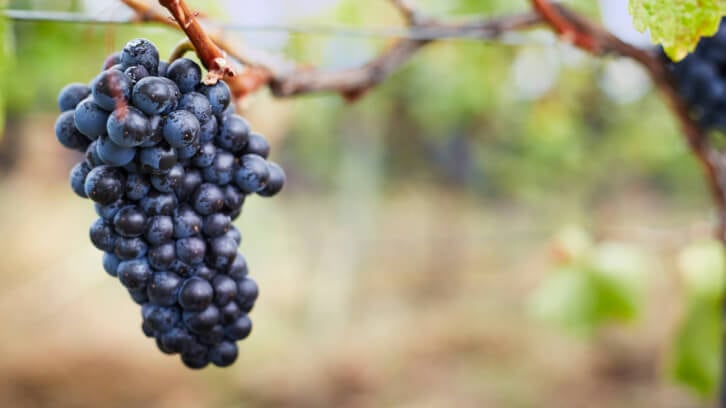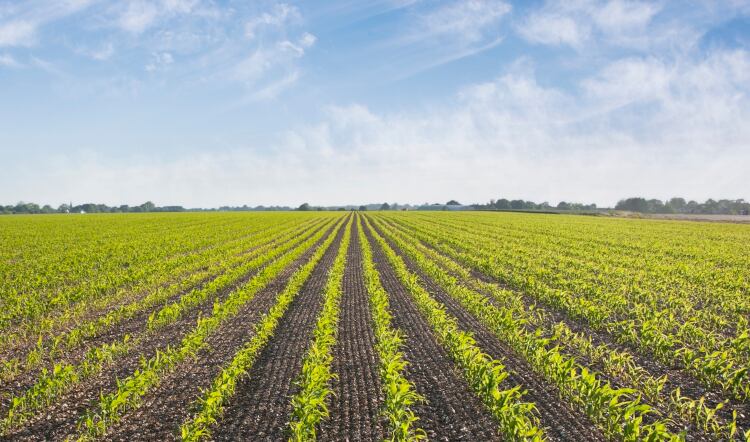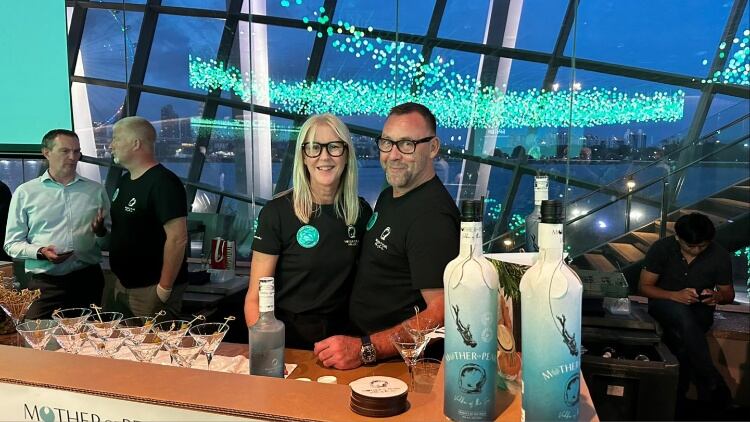Wine growers are having to adapt constantly as the conditions which were once ripe for their grapes have created a merciless terrain.
But all is not lost, as new research around crop varieties emerges, alongside a more compassionate understanding of environmental impact.
The death of Champagne?
Champagne can only come from one region of France – you guessed it, Champagne – making it particularly vulnerable to climate change.
There is a combination of four key elements that makes the production of Champagne unique: climate, soil, topography and collective craftsmanship.
Victoria Henson, the director of the Bureau du Champagne UK, which is the official voice of the Comité Champagne in the UK – a trade body representing the common interests of Champagne houses and growers – explained this in more detail.
“The Champagne vineyards are bathed in a dual climate subject to both continental and oceanic influences. This phenomenon is unique to Champagne and not found in any other French wine-making region,” she said.

“Another distinct element is the 'soil' or the 'subsoil' of the terrain. In Champagne, the outcrops of sedimentary rock are 75% limestone, composed of chalk, marl and limestone. This type of subsoil is porous, thus allowing for good drainage. It provides vines with excellent growing conditions, as their roots will stay dry, and in turn help increase grape quality.
“The choice of Champagne planting is based on compatibility with the nature of the local soil. Three varieties are particularly well suited: Pinot Noir, Chardonnay and Meunier.
“Topography also plays a factor, as the weather also varies depending on the different terrains. Champagne is shaped by its hillsides – where the vines are predominantly planted on slopes. Average gradient is 12% but some of the slopes are as steep as 59%. The hillsides provide each vine plant with optimal exposure to sunlight. They also optimise drainage as excess rainwater can run off.”
To future proof their supply, champagne growers are having to adjust to the extreme weather conditions we’ve becoming ever more familiar with.
“The Champagne region is taking climate change very seriously and it continues to be its top priority,” Henson continued. “On average, harvest in Champagne now starts 20 days earlier than it did 30 years ago. In 2020, the region recorded its earliest grape harvest start date in history, and the 2022 harvest was the seventh time to start in August over the past 17 years.”
As such, growers are looking to new techniques to combat various forms of decline in the vineyard. Henson offered a few examples of a project being rolled out already, including raising reserve levels.
“A crucial tool for regulating Champagne production, the reserve enables a portion of the wines produced during good harvests, to be kept for future use in any deficit years,” she said. “To guarantee a stable marketable yield each year and further improve the resilience of the sector, the reserve level has been raised from 8,000 kg/ha to 10,000 kg/ha.
“The region is also working towards the elimination of all herbicides and implementing additional steps to become greener, including reducing bottle weight, recycling waste products, and converting biomass.
“Results to date include 100% treatment of wine effluents and more than 90% of industrial waste, a 20% reduction in the carbon footprint per bottle since 2003 and 69% of the vineyard areas receiving environmental certification (with a target of 100% certified by 2030).”
In fact, Champagne was the first winegrowing region in the world to carry out a carbon footprint assessment in 2003.
“Today it is accelerating the implementation of its carbon plan to support the sector towards net-zero carbon by 2050.”
Working with suppliers
Of course, it isn’t just Champagne that is being affected by climate change. Around the world, beverage producers are making active strides to learn from their suppliers and help introduce new ways of working.
“At Kingsland Drinks we’ve worked hard, with our 100+ producers, to give the business a level of proofing against the climate change conditions we’re seeing. This means we look at new and emerging wine growing regions, varietals, transportation and logistics, and bottling and packing,” Paul Braydon, who is the head of the drinks company’s buying division, told Food Manufacture.
One example of its work in this area is its collaborative efforts with its Australian-based producer, Andrew Peace Wines, on a new transport method.
“On the road now, we’re bringing three flexi tanks of wine – the equivalent of 100,000 bottles of wine – on one truck. It triples the volume we can move in one journey and lessens our impact on the environment,” he explained.
Andrew Peace is also a member of Sustainable Winegrowing Australia and has employed initiatives to help minimise its energy usage and waste. This goal has been pursued through the recent installation of 1574kw solar panels and efforts to reuse 100% of its winery wastewater.
“All waste is used as compost or stock feed. Its efforts are countless and stretch to using sheep to help reduce slashing and provide natural fertilizer,” Braydon added.
But he also said the two companies recognise the importance of vineyard management practices, such as increased irrigation and innovative methods to protect grapevines in extreme heat. One example is Andrew Peace’s use of organic ‘sunscreen’ on vines, which helps to protect the leaves and grapes.
Research into new wine varieties
But the Kingsland team has also been educating itself, with visits to farmers. In June 2023, it visited Bordeaux to learn how climate change is impacting ripening and harvesting.
“Before 2014, there was an average five-day period between technical ripening and phenological ripening; and since 2014, that period has extended to 10 to 15 days,” Braydon explained. “This means that the acid/sugar profile reaches its peak, but further time is needed to achieve ripe tannins, colour and flavour. Waiting longer to harvest means sugar continues to go up (and increases the alcohols) and the acidity goes down (reducing freshness).
“We’ve observed that types of grapes being planted are changing in the region too, with some plots less suitable for Merlot being replaced with Cabernet Franc, and increasing planting of Malbec and Petit Verdot as these are late ripeners.”
He added: “2022 was a particularly warm year with drought condition so the effects of this were more exaggerated.”
Fortunately, there are a number of varieties of the wine crop, which all have very different traits that can make them adaptable to certain climate conditions.
Researcher Ignacio Morales-Castilla, who is part of the Department of Life Sciences at the Universidad de Alcalá in Spain, is currently looking to new varieties and how they react to specific climates.
The project, Iberian Future Wines, aims to compile, centralise and analyse data on native winegrape varieties. Through this research, he and the team will be able to assess and predict the impacts of climate change on viticulture.
One of the objectives of the project has been to collect data about the phenological behaviour of each variety based on its geographical distribution on the Iberian Peninsula. Phenology is a term used to describe the events through a plant’s development lifecycle, so when it starts sprouting, flowering, growing grapes, etc.
Based on modelling predictions and a range of situational tests, wherein the crops are subjected to certain conditions, Morales-Castilla and his team are able to understand where wine varieties can thrive as the climate changes.
“We can make predictions and see which varieties are going to suffer the highest damage and where, and which ones are going to perform better.”
This is also an area Kingsland Drinks is looking into too, as it explores “more heat resistant vines and late-ripening varieties” such as Syrah (Shiraz), Grenache, Cabernet Sauvignon and Mourvèdre (Monastrell/Mataro).
But while there is active work going into this, Morales-Castilla said wine farmers can help themselves and fellow growers further by experimenting on their land.
To this end, he recommends growers (if they can) devoting a small amount of their vineyard to testing new and specific varieties. And, importantly, when collecting the data, sharing it with scientists like himself.
“The more data we have, the better our predictions.”
New opportunities for other regions
Overall, if temperatures continue to soar, the wine industry will need to look not only at new varieties, but also perhaps to other regions with cooler climates.
“In real terms, this could be a shift from South Eastern Australia to Tasmania, or from Burgundy to England, whereby the cooler climates are increasingly more favourable,” Braydon acknowledged.
This could be a good opportunity for other regions across Europe, including the UK’s already-thriving sparkling sector.
“If temperatures continue to rise, some of the early ripening varieties such as Pinot Noir and Chardonnay may become more widespread globally in areas that are marginal from a climate perspective currently such as northern Europe and Tasmania,” Braydon said.
“We could see more northerly vineyards being planted in the UK if this trend continues. Some of the ‘cooler’ countries and regions such as New Zealand would see more diversity of plantings such as merlot and grenache as more varieties become viable.”
He added: “One of the most striking things we have seen is in marginal climate of Chablis: Basic Chablis is now riper and more like basic 1er Cru used to be 20 or 30 years ago. 1er Cru is now much more like what Grand Cru used to be, while Grand Cru wines are not Chablis-like any more – much more like Cote D’Or whites,” Braydon said.
However, as Braydon explained, areas like the UK aren’t without their own weather challenges – such as Britain’s prevailing wind direction and strength, alongside changing rainfall patterns.
And, while many wine regions are suffering from extreme heat, including Rioja (Spain) the Barossa (Australia) and California (Lodi, USA), their older vine material may be a hero in the making.
Braydon elaborated: “The deep root systems of old vines give them a stronger anchor and greater resilience to face the heat waves, droughts and storms increasingly prevalent through climate change. Herència Altés in Terra Alta, Spain, has over 20 hectares of old vines that are on average 100-years-old. The depth of the roots of these old vines is what enables the vines to seek water sources stored deep below ground and remain productive despite the average 400 mm of rain (200 mm less than a vine typically requires) that falls annually today.
“As well as requiring less surface water, the deep root systems of old vines make them more resilient to the heat spikes and less sensitive to vintage variation. In addition, old vines can be more disease and pest resistant than young vines, having learnt to live with diseases or pests, or developed immunity to them.”
Scientific solutions are great…but we need to keep temperatures down
“If warming is kept within ‘reasonable limits’, we will be able to adapt by changing what varieties we plant where,” Morales-Castilla told Food Manufacture, while cautioning that “we’ll lose some varieties for sure”.
And although it’s nice to see silver linings and make the best of a bad situation, we obviously want to refrain from the climate changing too drastically – and if it gets worse, there’s only so much that science can do.

The global mean temperature between February 2023 and January 2024, was the highest on record. According to the EU's Copernicus Climate Change Service, it reached 0.64°C above the 1991-2020 average and 1.52°C above the 1850-1900 pre-industrial average.
We are at a real risk of exceeding the limit at our current emission levels, with Imperial College London research stating that the remaining global carbon budget is set to be exhausted in six years.
Considering the impacts of climate change and the future, Braydon added: “In some regions a move to dry grown grapes will be unavoidable which will have a negative impact on yields, and result in increased production costs.
“The consequences will be – if not already – felt right through the supply chain, ultimately driving cost increases which inevitably cut into margin and get passed on to the consumer.
“When wine reaches the consumer, the question is: will they accept the changes the industry has had to make?”





